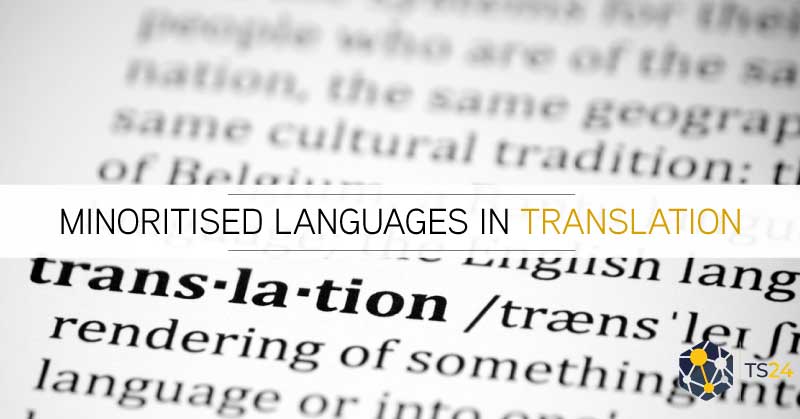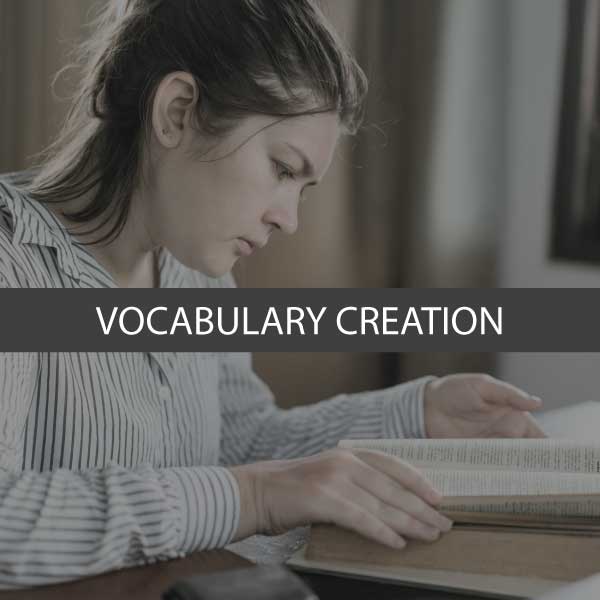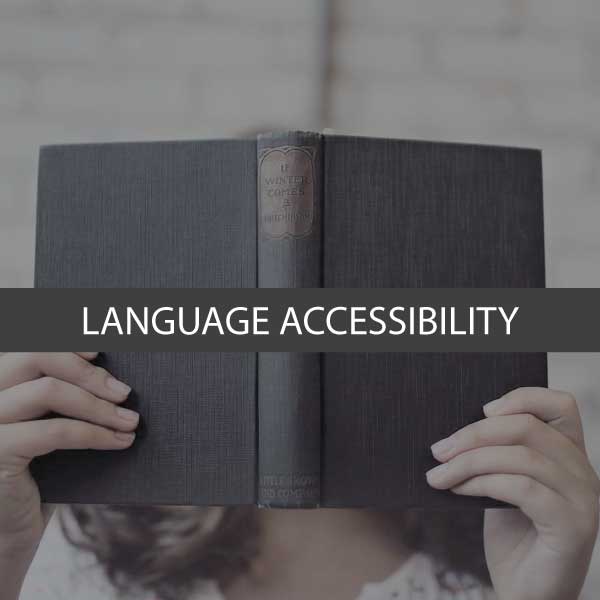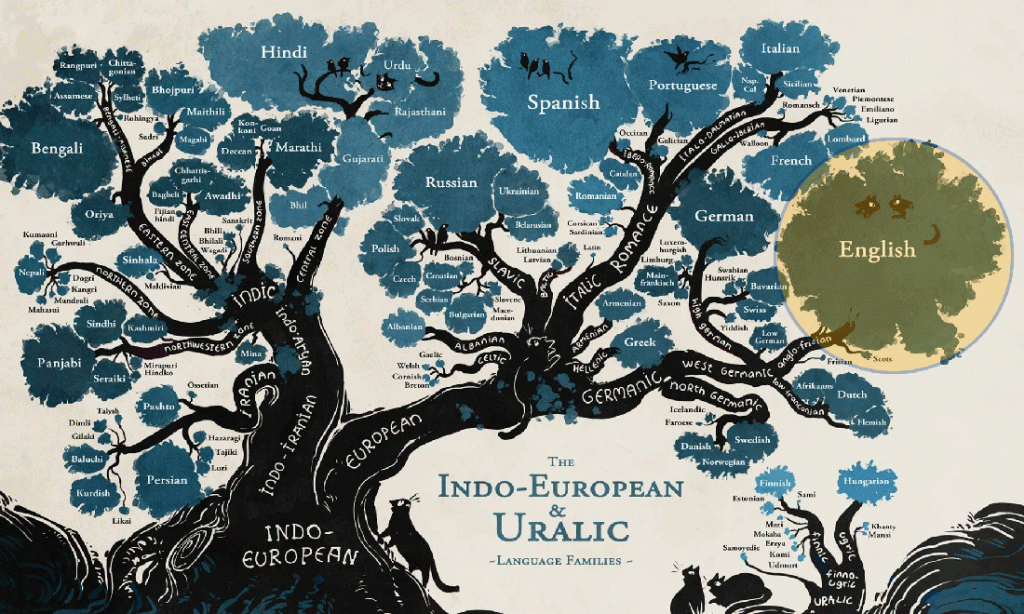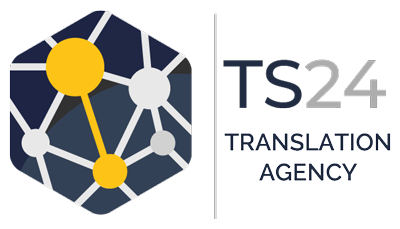Today, Translation Services 24 are fortunate to welcome a guest article written by Ashley Douglas. Ashley is an Edinburgh-based researcher, writer, and translator working in Scots, Gaelic, Danish, and German. She specialises in Scots original research, writing, translation, style guide and glossary development as well as talks & consultancy. Her areas of special interest include Scottish history and archaeology, politics, linguistics, and LGBT history.
You can follow Ashley on her on Twitter or by visiting her website here. Enjoy!

Translating Minoritised Languages
Scots: A Case Study
Any act of translation service from any one language into another is a complex and nuanced process. Each decision of the translator is informed by a range of considerations – from audience and purpose to wider cultural concerns.
When translating into minoritised languages, however, the number of decisions that the translator must make multiplies even further. Consideration must be given not only to word choice but also to word creation. The translator must carefully consider not only what words to use, but also how to write those words down. And the translator doesn’t work only with the minoritised language itself; often, they must also navigate the relationship with its neighbour language.
There is also far greater responsibility attached to each choice the translator makes. Every decision will determine not only how the individual translation is received, but also contribute to how the minoritised language as a whole is perceived. A poor translation into English or German is viewed as just that – a poor translation. It will not have wider implications for the status and recognition of the English or German language. A poor translation into a minoritised language, however, is often seized upon to ‘demonstrate’ that the language itself is lacking.
This article sets out some of the main considerations when translating into Scots as a minoritised language.
First, though, let us consider what makes a language minoritised.
What is a minoritised language?
In linguistic terms, no language is inferior or superior to another. Fundamentally, all languages are simply different combinations of phonemes and morphemes (meaning-bearing grammatical and lexical units) that can be used, with infinite combinatorial possibilities, to communicate with those for whom the same phonemes and morphemes have the same meaning – with those who speak the same language. In aural languages, phonemes are sounds. In visual-spatial languages such as BSL, hand shape and placement (manual features) and non-manual features behave as phonetics in aural languages.
Describing a language as minoritised is therefore not a statement about its linguistic value, but about its sociopolitical status at any given point in time. For example, Scotland’s currently minoritised languages of Gaelic and Scots were not always so. Both languages have been, at different times in earlier periods, the prestige language of the Scottish kingdom. The sounds, words and grammatical features of these languages have not significantly changed over the centuries; all that has changed is their sociopolitical status and thus how they are perceived.
A language is minoritised where its sociopolitical status is diminished. This can happen for any number, or a combination, of reasons, but the result is that the language comes to be viewed as a ‘lesser’ or ‘invalid’ form of communication, in contrast to whatever is the socially dominant or prestige language at the time.
When a language is minoritised, it tends to be excluded from formal spheres, such as education and governance, and limited instead to spoken, colloquial and low-register settings. This has implications for visibility and validity, as the language tends not to be seen in written form, and particularly not in public-facing and formal contexts.
Its exclusion from the written sphere and education also has serious implications for levels of literacy. Frequently, speakers of minoritised languages are not literate in the language that they speak, but instead have reading and writing skills in the socially dominant language. This relegation of minoritised languages to the spoken sphere also means that they often lack an authoritative orthography or written standard.
(Note that a minoritised – i.e. socially marginalised – language is not necessarily also a minority language, i.e. spoken by a limited number of speakers and endangered. In Scotland, for example, Gaelic is both a minority language – spoken by only 1-2% of the population – and minoritisied. By contrast, although minoritised, Scots is not meaningfully a minority language, spoken as it is by at least 1.5 million people – or around a third of Scotland’s population. The term minoritised also makes clear that marginalised languages – whether or not they are also minority languages – are actively minoritised by people, and can just as actively be “deminoritised”).
We will now consider in detail some of the main considerations and challenges that face the translator of Modern Scots, as a case study of translating into a minoritised language.
Identify and achieve the correct register
“Register” describes how we change our use of language on the scale of “formal” to “informal” depending on who we are communicating with and in what context. Regardless of language used, we know to speak to our boss or our grandparent in a different manner to how we speak to a close friend or a small child, and our text messages to our spouse have a very different feel to the email we write to our accountant.
In this, we are not changing language but register; that is, the degree of formality or familiarity of our communication. We do not change what language we are using, but which parts of it we are using and how.
The minoritisation process often involves the exclusion of the language from formal and high-register settings, with the result that it comes to be used predominantly in lower-register and spoken settings. This has certainly been the experience for Scots in more recent times.
This sociopolitical exclusion impacts the perception of the language, which comes to be viewed as inherently and invariably colloquial, and associated exclusively with low-register settings. It ceases to be viewed as a fully-fledged language with a range of registers, suitable for all settings and contexts. The same sociopolitical exclusion also impedes the natural development of modern technical, specialist and formal vocabulary, which further exacerbates the language’s minoritised status.
This means that identifying and achieving the correct register when translating into Scots is a crucial consideration. The Scots translator must be confident in their ability to produce register-appropriate Scots and, in particular, high-register Scots where required; for example, the translation of an academic paper, policy document or press release into Scots.
If the register of a translation is lower than context demands, such as through using idiom, syntax or vocabulary that is overly colloquial for the setting, it will further entrench the minoritised status of Scots by fuelling negative perceptions of it as being unfit for higher registers and inherently low-register or comedic in nature.
For example, everyday Scots phrases such as “gonnae no” or “gie it laldie” would not be appropriate for high-register contexts or for formal or even neutral public-facing contexts. Let’s say the Scots translator were commissioned to translate signage in a public building (perhaps a court building or a swimming pool) that said “Please do not take photos”. A register-appropriate translation here could be “Please dinnae tak photaes” or “Please haud aff takkin photaes” but not “Gonnae no tak photaes”, which would be overly colloquial for the context and risk being read as humorous.
Vocabulary revival and creation
Due to gaps in certain areas of vocabulary as a result of minoritisation, the Scots translator must frequently be skilled in more than just translation, but also in word creation and corpus building.
When translating between two established languages – e.g. German and English – the words required in the target language generally already exist, ready to be used. The translator simply needs to know the vocabulary in each language. By contrast, when the Scots translator is commissioned to translate a modern technical or specialist text, the task often involves developing appropriate modern Scots vocabulary where it does not yet exist.
Source Language > Target Language
Source Language > Word Creation > Target Minoritised Language
Of course, all living languages change and gain new words all the time. “Social distancing” and “cryptocurrency” have only recently been added to the vocabulary of Modern English, for example. “Television” and “evolution” were, equally, brand-new concepts at the time, requiring new vocabulary to match.
However, where a language is minoritised, new linguistic coinages do not necessarily occur naturally or at the same pace as the world has developed, particularly in specialist spheres such as science and technology, but also in social spheres such as terminology for the LGBT+ community. This is not only the case for Scots, but also for other minoritised languages – such as Welsh and Gaelic – and for revived languages such as Modern Hebrew.
At the same time, many historical high-register terms – from the many centuries when Scots was the formal language of state – have fallen out of use among modern speakers.
As such, minoritised languages sometimes require a greater helping hand in the form of conscious corpus building than do socially dominant languages. In these cases, the translator steps in to consider how those words might have naturally developed.
The Scots translator thus frequently has to coin brand new words, revive or recast old words for a new context, recast existing words in a new context, and derive inspiration from other languages with which Scots shares features to create or import vocabulary where required.
For example, a recent Modern Scots coinage is “lowp-up” for the English “pop-up” in the context of an internet browser. This is derived from the Scots verb “tae lowp (to jump)”, with the familiar modern word recast for a new context. As another example, in order to translate into Modern Scots the scientific concept of “dispersal”, in the context of an academic paper about evolutionary biology, the author has opted to revive and repurpose the historical Scots term “skail”, attested to in Scots literature from the 1300s onwards and deriving from a verb meaning “to spread about, to scatter, to put to flight, to disperse.”
Translation, not transcription
Another consequence of the exclusion of minoritised languages from the formal, written sphere is that there is often no standard for spelling and orthography. This is the case for Modern Scots.
Where the translator is rendering what has been marginalised to the spoken sphere on the page, there may be the temptation to simply write the words down how they sound when spoken. This overly-phonetic approach, however, is fraught with issues and should be avoided.
Spoken and written language are very different forms of communication in countless significant respects. Specifically in relation to phonetics and orthography, there is not always a clear or direct relationship between how a word is written and how it should be pronounced. Think of the various ways that “-ough” may be pronounced in English; for example, “tough” versus “through”.
Further, we also accept that different speakers will pronounce a given word differently based on a range of factors, including accent. Think of different people you know saying the world ‘girl’ in English, or how you say it compared to someone with a different accent. In rhotic accents, for example, the ‘r’ in the middle will be pronounced; in other accents, there will be a long vowel sound instead. The word on the page, however, remains the same. We do not write “girrul” or “guh-rul” to represent someone with a Scottish accent saying “girl”, or “guuuhl” or “gu-u-hl” to depict a southern English accent.
There is a massive difference between written and spoken language, and it is not necessarily the role of the written word to reflect or indicate how a combination of letters is realised in spoken language by a given speaker.
Writing down Scots words based on how they are pronounced by some speakers fails to transition from spoken to written language. It is not translation into or writing in Scots, but an attempt at subjective phonetic transcription using the Latin alphabet rather than the international phonetic alphabet. It reinforces the minoritised status of the language being transcribed by perpetuating the perception that it belongs exclusively to the spoken and informal sphere and does not have a legitimate written form.
Accessibility in word choice and spelling
Where a language is minoritised, its exclusion from education as well as its lack of visibility in the formal and written sphere means that people are often not literate (i.e. lack reading and writing skills) in the language that they speak.
This makes accessibility a greater consideration when translating into minoritised languages than is the case with established or dominant languages. Frequently, the translator will have to prioritise the accessibility of the text over other concerns in order that speakers are not alienated or overwhelmed by forms and words that are overly complex and challenging for their starting levels of literacy. In texts that may be their first meaningful encounter with the language that they speak in written form, it is of paramount importance that the speaker recognises themselves in the text and understands what is being said.
All of this applies to Scots. Scots speakers generally cannot comfortably read or write in Scots and are not well versed in its history or literature, and thus its full linguistic richness. Instead, they tend to be literate in English and far more familiar and comfortable with its written forms and literature. The Scots translator therefore has to decide not only what words to use, but also how to render on the page each and every one, bearing in mind that Scots speakers may never have seen the words that they use in daily speech written down before, and may never have encountered certain more literary or higher-register Scots words before at all.
In this, the Scots translator is often faced with the tricky task of finding the correct balance between accessibility for the everyday speaker of Scots – which often means opting to use a word or spelling shared with English – and distinctiveness, which often means using richer Scots vocabulary and features, but which may not be familiar to the average speaker today, which risks alienation and lack of understanding.
Word choice
If the text aims to connect and communicate with everyday speakers of Scots who are likely to be unaccustomed to seeing it written down or reading it, the translator should generally opt for accessibility, even if it means a final text that shares more features with English and doesn’t necessarily showcase the full potential and distinctiveness of Scots.
For example, the Scots verb “tae big” (from Old Norse) means to “to build” and “biggin” means “building”. However, these words may not be well known to the average speaker of Scots today. In some instances, therefore, it may be better advised to go with “to build”/ “building” (Scots words shared with English, derived from Old English) in a Scots translation aimed at average everyday speakers; for example, a museum activity sheet aimed at children and their guardians. Similarly, “nor” is a Scots conjunction equivalent to English “than”, and “forby” a formal term meaning “moreover/in addition to” – each of which may be too advanced, however, to use in an entry-level Scots translation.
Spelling
The same prioritisation of accessibility and non-alienation must apply to spelling choices. Although there is currently no single official written standard for Modern Scots, a clearly recognisable accessible standard has been organically establishing itself in line with its revival and increasing use in writing in recent decades. This is reflected above all in the publications from Scots language imprint Itchy Coo, which has set out a rich yet accessible basis for writing in (and reading) Modern Scots – particularly, but not exclusively, through its books for children.
For example, anyone who is familiar with Modern Scots would know that “tae” is the most common way to write the Scots preposition “to”. Even in the absence of an official standard, it would be a strange (if not technically “wrong”) translation choice to render it “ti” or “tay” or “te”, with implications for comprehension and accessibility, as well as working against the organic standard.
Similarly, although it may be correct to say that Scots “gonnae” (“going to”) should technically be written as “gaun’ae (with a contractive apostrophe representing the shortening of “gaun tae”), “gonnae” is a highly established and recognisable form in written Modern Scots, no doubt influenced by a combination of the US English “gonna” and the highly familiar Scots negated verbal forms “dinnae”, “cannae” etc. It is therefore not only the most accessible way to write it, but also the organically developed and now established form.
The Relationship between Scots and English
Where a language is minoritised, it is usually at the expense of another, socio-politically dominant language. Where these languages – the minoritised and the dominant – share linguistic features, any similarities between them may be seized upon to subsume the minoritised language as no more than a dialect or variant of its dominant neighbour, and not a language in its own right. Navigating this relationship is therefore fraught with sociopolitical issues, if not linguistic ones.
Image by: Minna Sundberg – Follow her on twitter here.
Linguistically, a significant degree of mutual intelligibility and shared features between Scots and English is entirely expected, as they are fundamentally closely related West Germanic languages with the same historical roots. This means that they share a range of identical or very similar words and features that are derived from their shared common ancestor languages of (chronologically): Proto-Indo-European, Proto-Germanic and West Germanic through to their most recent common ancestor of Old English or Anglo-Saxon. Scots and English each developed from different dialects of Old English/Anglo-Saxon.
Their shared Germanic roots mean that Scots and English also share substantial amounts of key vocabulary and features with other West Germanic languages such as German and Dutch, and with North Germanic languages such as Danish and Norwegian. The words in this ‘shared inheritance’ category are neither ‘Scots’ nor ‘English’ words, but belong to each equally – and to other languages as well – with etymological roots in a shared ancestor language.
Scots and English also share a bank of the same or similar loan words that have come in from the same external sources, including words derived from Latin, Greek and French. This category includes words such as “democracy”, “postulate” or “cappuccino” – there is no ‘Scots word’ for these things in the same way as there is no ‘English word’ for them – they are loan words that came into each language from Greek, Latin and Italian respectively.
Alongside these shared vocabulary groups, there is then also a wide range of words (as well as other linguistic features) that are unique to Scots and not shared with English. In terms of vocabulary, this includes loan words that came from other languages into Scots but not into English, or words that have developed uniquely in Scots due to all sorts of historical, cultural and linguistic reasons; each word has its own etymological history. For example, Scots had significant historical influence from Old Norse, which means that it now has lots of words with parallels in the modern Nordic languages that English does not (e.g. Scots “bairn”, Danish “barn”, English “child”). Other Scots words such as “scunner” (attested to from Older Scots onwards) are simply unique to Scots.
Scots also shares a fascinating feature of many modern Germanic languages, which is that they frequently have a more literal descriptive Germanic term and a less transparent Latinate term for the same concept. For example, Danish has “lungebetændelse” (literally: lung-inflammation) as well as “pneumoni” in the same way that German has “Lungenentzündung” and “Pneumonie”, where English has only Latin-derived “pneumonia”.
As Modern Scots has preserved more features of their shared Germanic inheritance than has Modern English, it similarly often either still has Germanic terms to draw on – which have often since fallen out of use in Modern English – or lends itself well to the creation of literalistic Germanic compound coinages. For example, in Scots, we have both the word “history” (shared with English, from Greek via Latin) and the more distinctly Scots word “bygane” (from a Germanic root), either of which could be used in a translation into Scots.
As well as English having been the dominant language and language of literacy in Scotland for the past few hundred years, Global English (including US English) is also a hugely influential prestige language and lingua franca in the modern world – as was once Latin, for example, which has left its mark in many languages. This wider influence of Global English – on Scots as well as many other languages – along with the specific recent dominance of the English of England in Scotland mean that Modern Scots has undoubtedly been subject to perceptible influence from English. In terms of vocabulary, for example, ayewis is a Modern Scots term that is an amalgamation of the historical Scots word aye (always) and English always, resulting in the Scots-English hybrid ayewis. Like many other languages, Modern Scots also has a number of English loan words.
The vocabulary of Modern Scots vis-a-vis Modern English can therefore be said to be made up from the following main groups:
1. Shared inheritance vocabulary with Modern English (particularly from Old English)
2. Shared loan word vocabulary with Modern English (particularly Greek and Latin derived)
3. Distinct Modern Scots vocabulary not shared with Modern English (but which may be shared with other languages)
4. Modern Scots vocabulary due to the influence of Modern English/Global English
In much the same way, the modern Nordic languages of Swedish, Danish and Norwegian all share a significant amount of similarities and vocabulary, as they are all closely related North Germanic languages that developed from Old Norse. They also share a lot of the same external loan words. However, they also each have their own unique vocabulary, as well as a range of other linguistic features, that make them distinct from one another. This contributes – along with a range of non-linguistic factors – to their ultimate language status.
For example, we may also note here how both the Latinate and Germanic words for ‘history’ are identical in Danish and Norwegian, which simply reflects their linguistic closeness and does not mitigate against the language status of each.
Danish: historie / fortid
Norwegian: historie / fortid
Scots: history / bygane
English: history
Clearly, it is entirely natural and normal for languages to have a range of vocabulary from different sources, some of which will be shared with other languages. It is also entirely natural and normal for closely related languages to look and sound notably similar in some respects while being distinct in others.
This unproblematic linguistic reality, however, belies a problematic sociolinguistic reality where one of the languages is minoritised (Scots) and the other is dominant (English). In this case, any affinities or shared vocabulary between a minoritised language and its dominant neighbour will often be viewed through the lens of the latter. In the case of Scots, similarities with English may be viewed as ‘demonstrating’ that Scots is merely a variant or dialect of English. This is the case even where the ‘English’ word is nothing of the sort – it being either a loan-word from another language or a word derived from the same shared historical source as the Scots word.
In any translation task, there is therefore a fine balance to be struck between challenging negative sociolinguistic perceptions of Scots by avoiding similarity with English wherever possible, and prioritising linguistic accessibility for Scots speakers who are not fully literate in the language – which often means producing a Scots text that shares more features with English, even where more distinct Scots alternatives exist and could be used.
Equally, sometimes a suitable distinct Scots alternative simply won’t exist, and won’t lend itself well to coining, and the most natural and appropriate word in Scots will be a word either shared with Modern English or loaned from Modern/Global English. Here, the translator must avoid the temptation to overcompensate against negative sociolinguistic perceptions by overstating the differences between Scots and English and over-translating. There is little merit in creating a Scots word for “internet”, for example.
It is impossible to give hard-and-fast rules on how to navigate the sociolinguistic and linguistic relationship between Scots and English when translating; each decision has to be made on a case-by-case basis and will be dependent on the text and context in question. However, there are two practices that should always be avoided at all costs.
Scots, not Scotticisation
Although there is scope for a Scots text to share more or fewer features with English dependent on context and audience, the translated end text nonetheless has to be meaningfully Scots, and not lightly ‘scotticised’ English.
A Scots translation should never exhibit over-anglicisation. It should never use English grammar, vocabulary or idiom where a clear and appropriate Scots alternative exists. The translator should always opt for as rich and distinct a Scots as possible in line with the audience and aim of the text in question.
A Scots translation must avoid reading like an English sentence with the odd word changed. It must be meaningfully Scots in grammar and syntax as well as in vocabulary.
1. four years ago
2. fower years ago
3. fower year ago
4. fower year syne
For example, only options 3 or 4 are acceptable here. 1 is English. 2 uses one Scots word but keeps English grammar. 3 uses a Scots word and grammar, but opts for the more accessible (shared with English) vocabulary ‘ago’, which may be most suited for a given text/audience. 4 is more distinctly Scots, with the more literary Scots ‘syne’ instead of ‘ago’. The translator’s choice is between the two valid options of 3 and 4; 1 and 2 are invalid.
Lack of meaningful translation from English into Scots further entrenches the latter’s minoritised status by fuelling negative sociolinguistic perceptions that it is simply a variant of English and not distinct enough to merit language status. It misses opportunities to showcase, preserve or revive distinctly Scots features – from items of vocabulary to features such as past tense verbal endings in “-t” (rather than “-ed”) or singular nouns after numerals in contexts such as “twa year later”.
No ‘Apologetic Apostrophes’
A common feature of poor Scots translations is the little ’ that is unnecessarily added at the end of Scots words. Although some Scots writers have used what can be termed ‘apologetic apostrophes’ in the recent past – including Robert Burns – they are considered extremely bad practice and should absolutely be avoided today.
Why? The apologetic apostrophe is an example of English orthography wrongly applied to correctly spelled Scots words. In English, the apostrophe is used orthographically to represent contractions i.e. missing letters – for example, “do not” is contracted to “don’t”. However, a Scots word is just that – a Scots word. Applying an apologetic apostrophe is to view a Scots word through an English lens and assume that any differences with the English word amount to a ‘missing letter’.
However, Scots verbal forms, for example, end in -in (compared to English -ing); they are not missing a g at the end, they simply don’t have one. To render a Scots verb as ending n’ is therefore to wrongly apply English orthography, and in doing so, to wrongly render Scots as a variant of English. Similarly, the preposition wi in Scots is not the English preposition with, absent two letters, but the Scots preposition, wi.
Further, we are also coded to associate the contracting apostrophe as a marker of colloquialism more generally – think Dunkin’ Donuts and such like.
Apologetic apostrophes therefore simultaneously feed into two negative sociopolitical facets of Scots as a minoritised language: the notion of Scots as a variant of English and not a language in its own right, and its relegation to the colloquial and lower-register sphere.
Conclusion
The sensitive sociolinguistic considerations and practical challenges around translating into minoritised languages mean that choosing to do so is often about far more than just communication, but also symbolism and revival. It is about saying that the minoritised language is there and is valid.
It is about putting it – or putting it back – into places from which it has been excluded. It is about trying to undo some of the layers and years of prejudice that have led to the language being minoritised in the first place.
In all of this, and particularly in building vocabulary and literacy in the language, it is about ensuring that the language has a future and that we do not lose it altogether.
If we do not meaningfully translate into and write in minoritised languages, they will, at best, remain in their limited minoritised states, their true value and potential unrealised and unrecognised. At worst, they will eventually die out altogether.
If translation into minoritised languages is an important task, however, it is not an easy one. There is no doubt that certified translators of minoritised languages have far more decisions to make and bear far more responsibility than translators of their non-minoritised, linguistically and socially uncontested counterparts.
In relation to Scots specifically, a poor translation may:
• not achieve the correct register
• use overly phonetic rendering
• make strange and alienating orthographic choices/not reflect the organic standard
• be gratuitously and artificially different from English
• miss linguistic and creative opportunities to showcase/corpus build
• be in too challenging a Scots for the audience and aim of the text
• use apologetic apostrophes
• be too close to English/not meaningfully Scots enough
A good translation into Scots, by contrast, will:
• achieve the correct register
• not display overly phonetic rendering
• embrace opportunities to showcase Scots features/corpus build
• feature creative and functional new coinages, as appropriate
• reflect the organic orthographic standard and make non-alienating and accessible spelling choices
• not use apologetic apostrophes
• be meaningfully Scots, but not unnaturally distinct from English
It is hoped that this article will encourage clients in relation to the importance of commissioning translations into minoritised languages in general, and assist them in understanding their needs and expectations around translations into Scots in particular. It is also hoped that the article will be welcomed as valuable guidance for anyone working with Scots in translation and/or in writing more generally.

